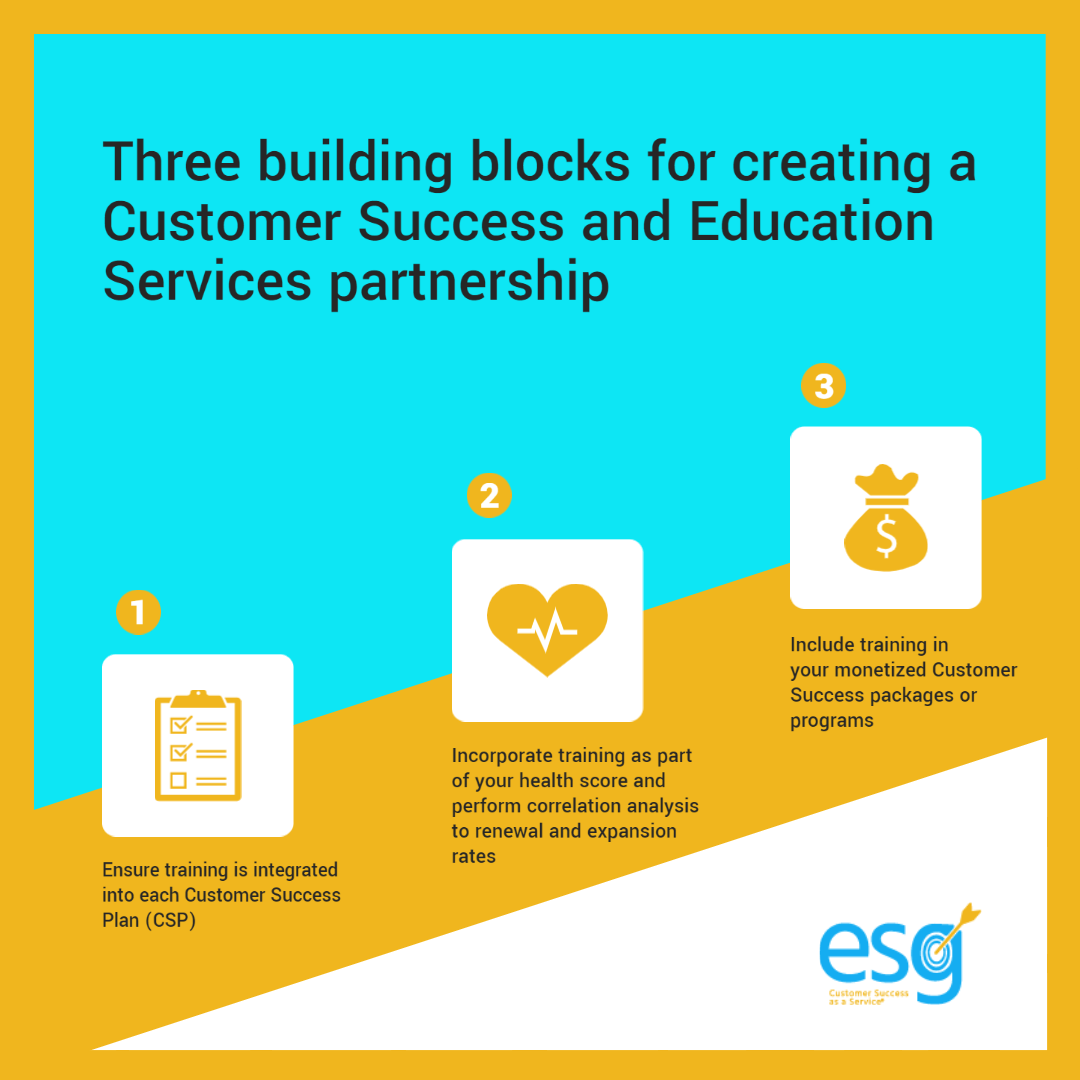Ignoring the impact of education on Customer Success simply isn’t an option. When Customer Success (CS) and Education Services (ES) teams are successfully aligned, product usage rates go up, and churn rates go down.
Education within the customer lifecycle
So, if more training equals higher adoption and less churn, the question then becomes, “where does education fit into the customer lifecycle?” The truth is that it is required at every stage of a customer’s journey. In fact, it is so critical that it has earned a lifecycle stage of its own in our book.
In our view of the five stages of the customer lifecycle, education comes just after onboarding and before adoption, which is followed by value realization, and then value expansion. We find education and training to be especially vital just after onboarding because this is when customers are using your product on their own for the first time.
Although your onboarding checklist may say you’ve already taught your new customer how to use your product’s key features or recommended introductory courses to them, there’s a good chance that they missed some (or all) of that during the intensity of implementation.
Never stop learning
Just because we’ve crowned education with its own stage of the customer lifecycle does not mean that you can check it off the list as done once a customer has formally moved on to the adoption stage. There will always be more to learn! More features, product updates, new users within an account, new roles for existing users, and on and on the list goes.
So, make sure you have close alignment between CS and ES. Our favorite way to make this alignment work seamlessly is for the Education Services department to roll up into the larger Customer Success organization. This organizational structure creates natural alignment, but it’s not the only way to accomplish your shared goals.
Think about it – there are obvious points throughout the customer journey where education can positively impact the customer experience. For instance, consider your company’s onboarding process. This is the first impression for most end users. Education teams can ensure this first impression is a positive one by providing training cheat sheets to help the Customer Success Manager (CSM) or Onboarding Specialist correctly explain the basics to new users and connect them with the right training resources. This is common practice but may be the only joint activity in your organization today.
Deeper into customer journey, ES can supply CSMs with quick learning videos to help educate their customers on key product features and benefits. Research shows that providing customers with short tutorials on product features before ending a meeting can reduce churn by 6%.
Education leaders – we recommend getting a tight grasp on the data behind the role that education plays in the health of your customer. Once you’ve got the data, share it with your Customer Success stakeholders to get them talking. Before you know it, opportunities to align ES and CS at scale will reveal themselves.
Let’s get specific
TSIA recommends coordination and cooperation between CS and ES in three specific areas that span all stages of the customer lifecycle.
CS leaders – keep in mind that you’re not just helping out your friends over in Education Services by incorporating training into CS. Your collaboration will boost metrics like penetration rate of training within the install base that are important to your ES colleagues, and in turn, it will lead to improvements in metrics that matter to you as well. TSIA reports a 12-13% increase in median year-over-year product subscription growth rates in organizations that have any one of the three cross-functional initiatives listed above in place. |
 |
Working together
Proper training leads to increases in product usage and retention and decreases in support tickets and churn. In fact, the metrics that matter to each of you may be more similar than you think. In TSIA’s recent benchmarking study, the most common primary objective of education organizations was product adoption, with 50% of survey participants identifying this as their number one priority.
Each department will have their own set of needs from the other. Be transparent about what you want and need, and what you can and will provide in return. Set clear expectations so everyone involved understands the necessary steps and there are no disappointments due to misunderstanding.
For example, both departments will likely need to collect data from the other. Which data points are you looking for? What data do you have access to? How is that defined? Be sure to ask all of these questions up front! Get on the same page in order to pave a clear path ahead.
Together, Customer Success and Education Services are like peanut butter and jelly. The sum is certainly greater than the two parts alone.


